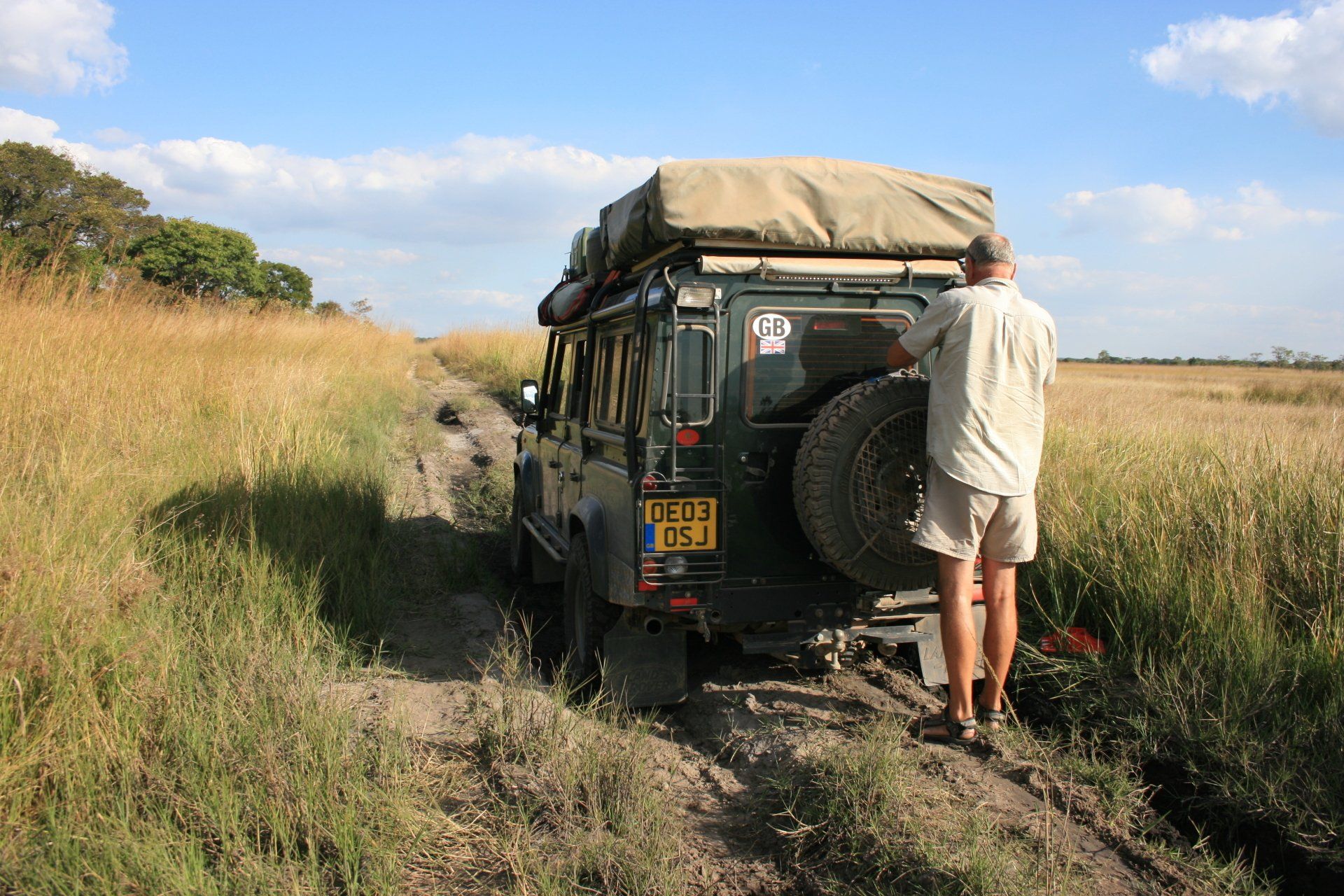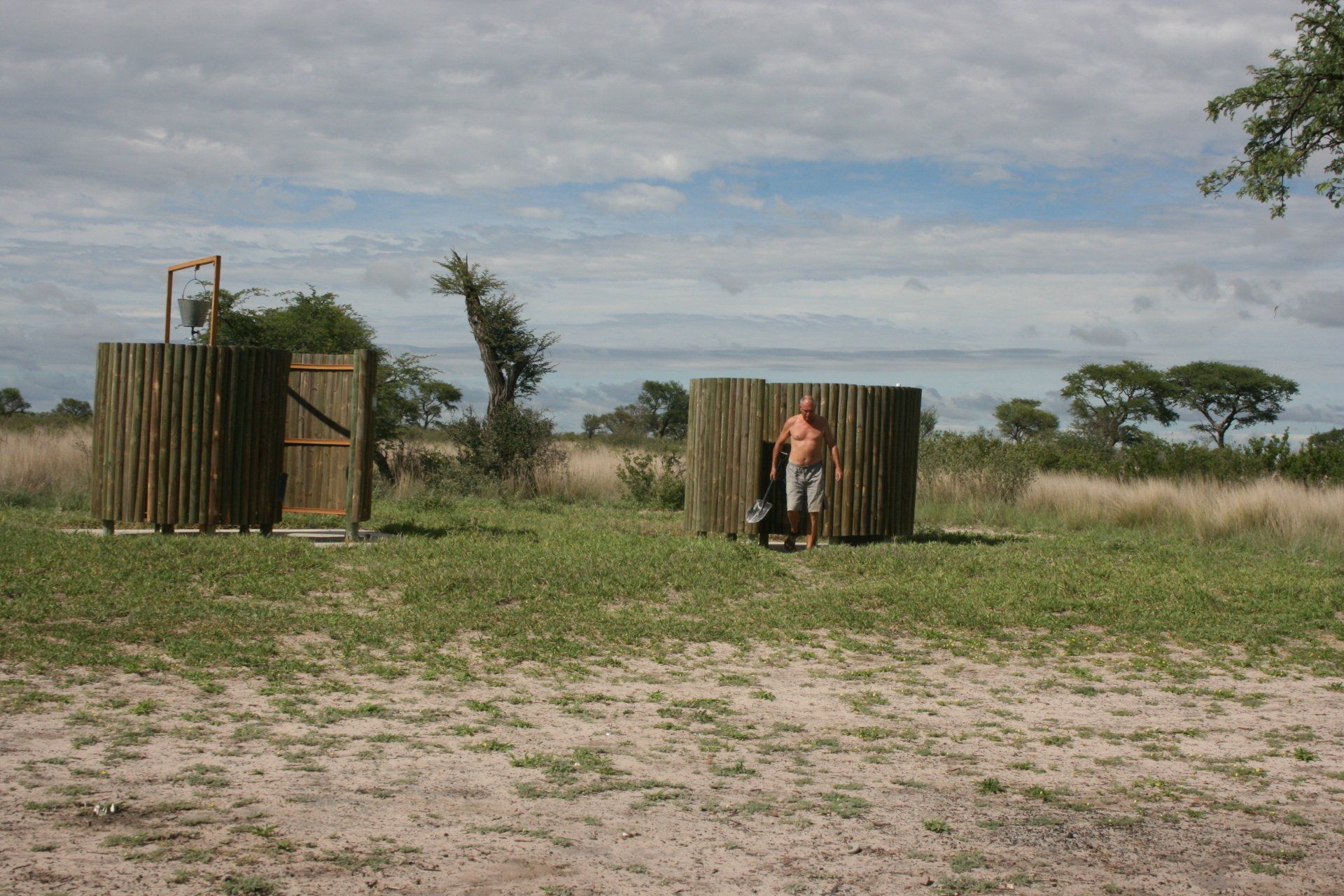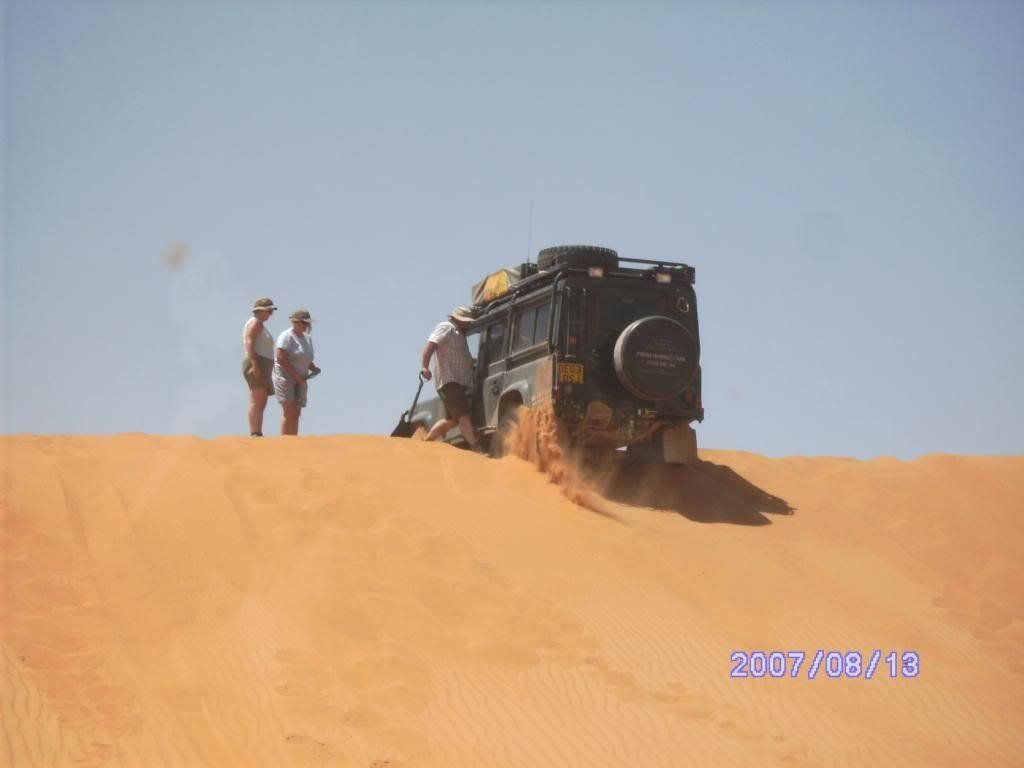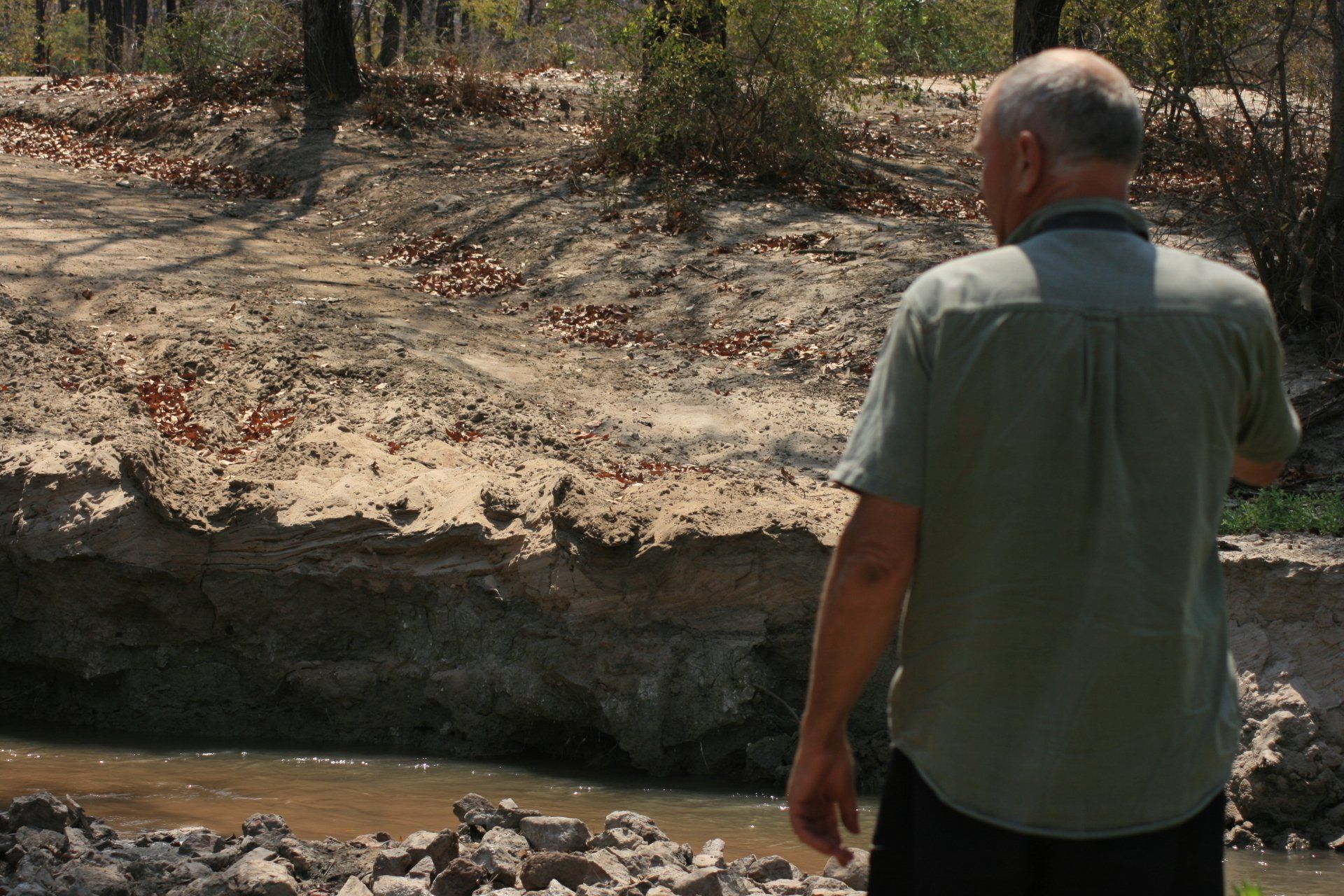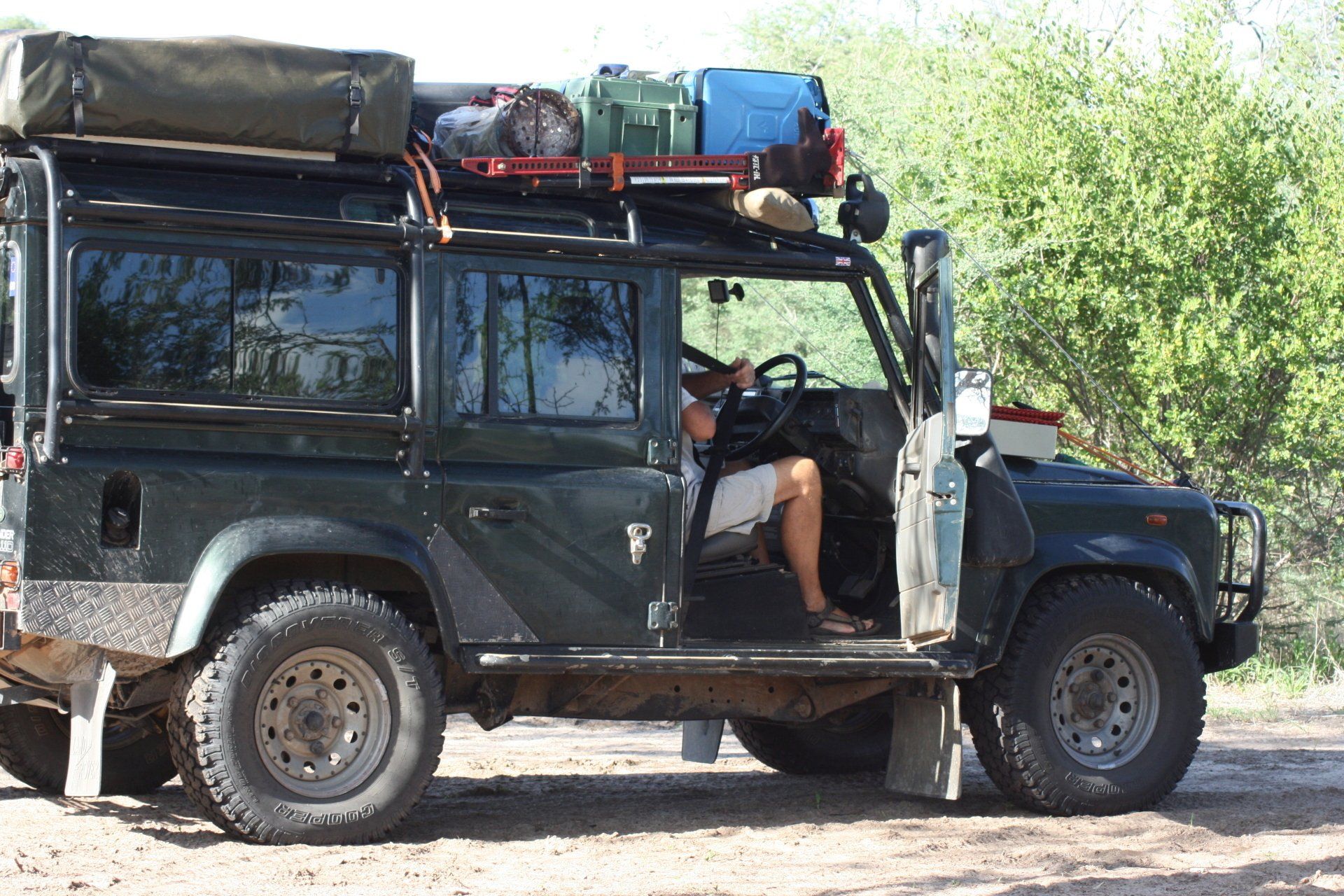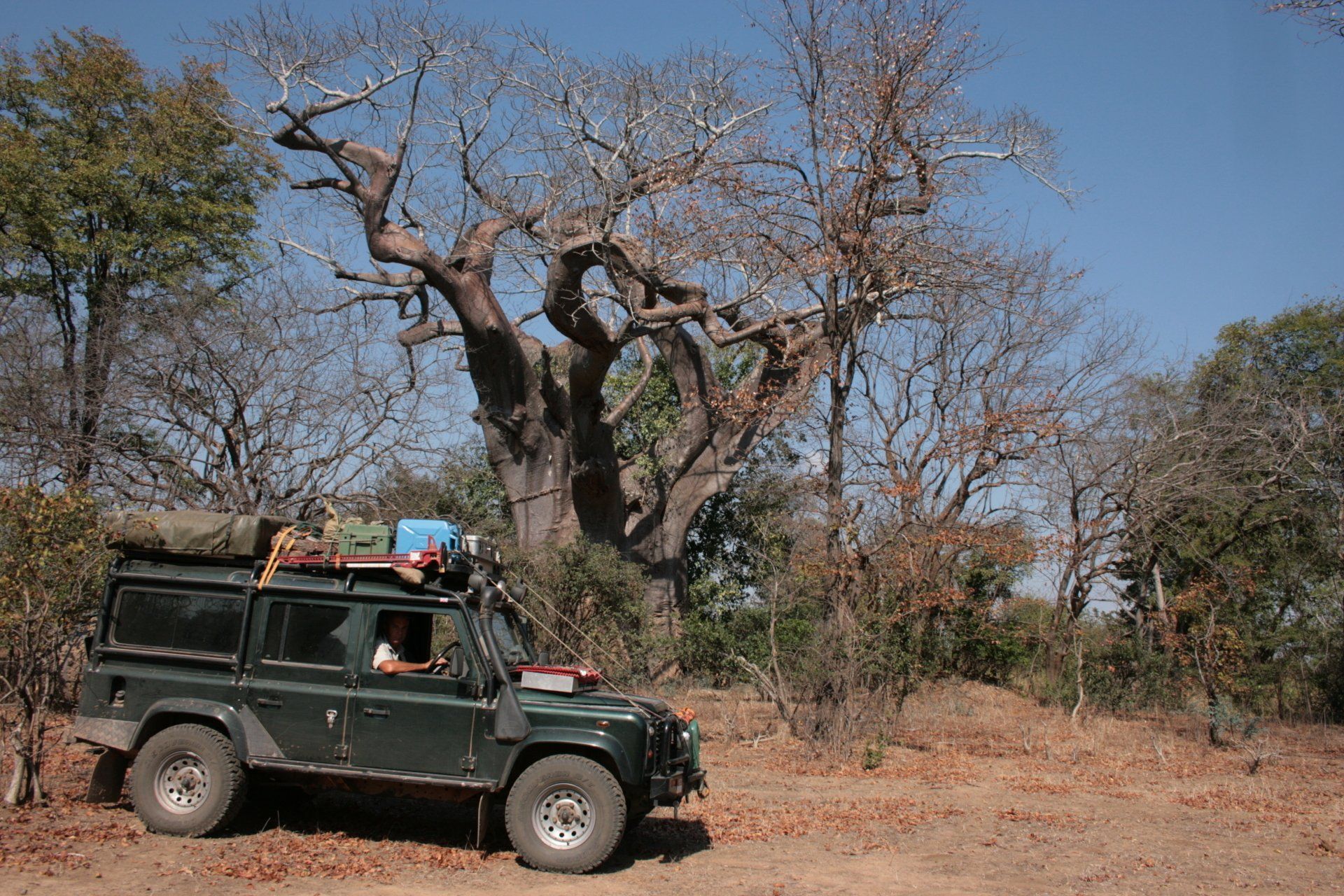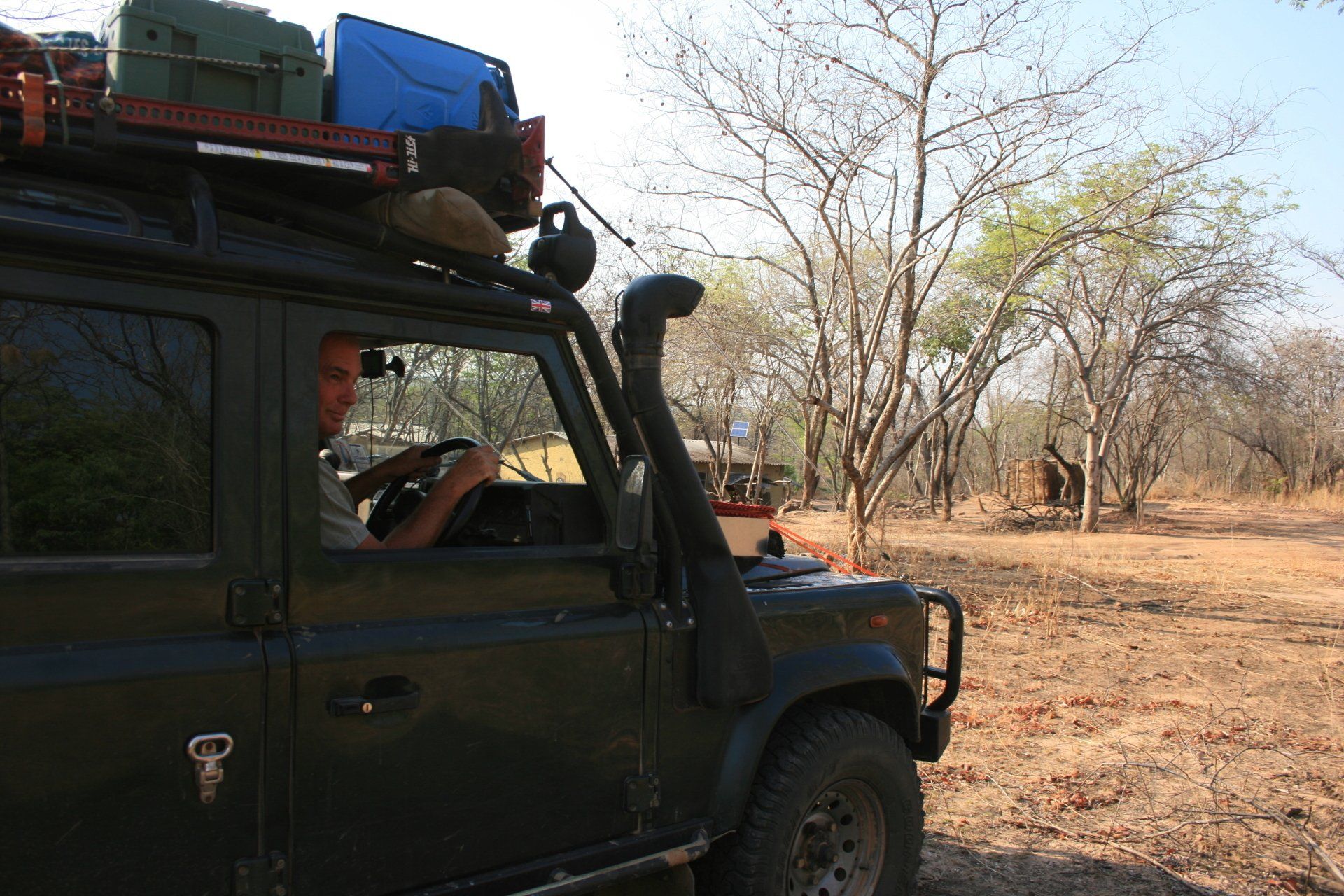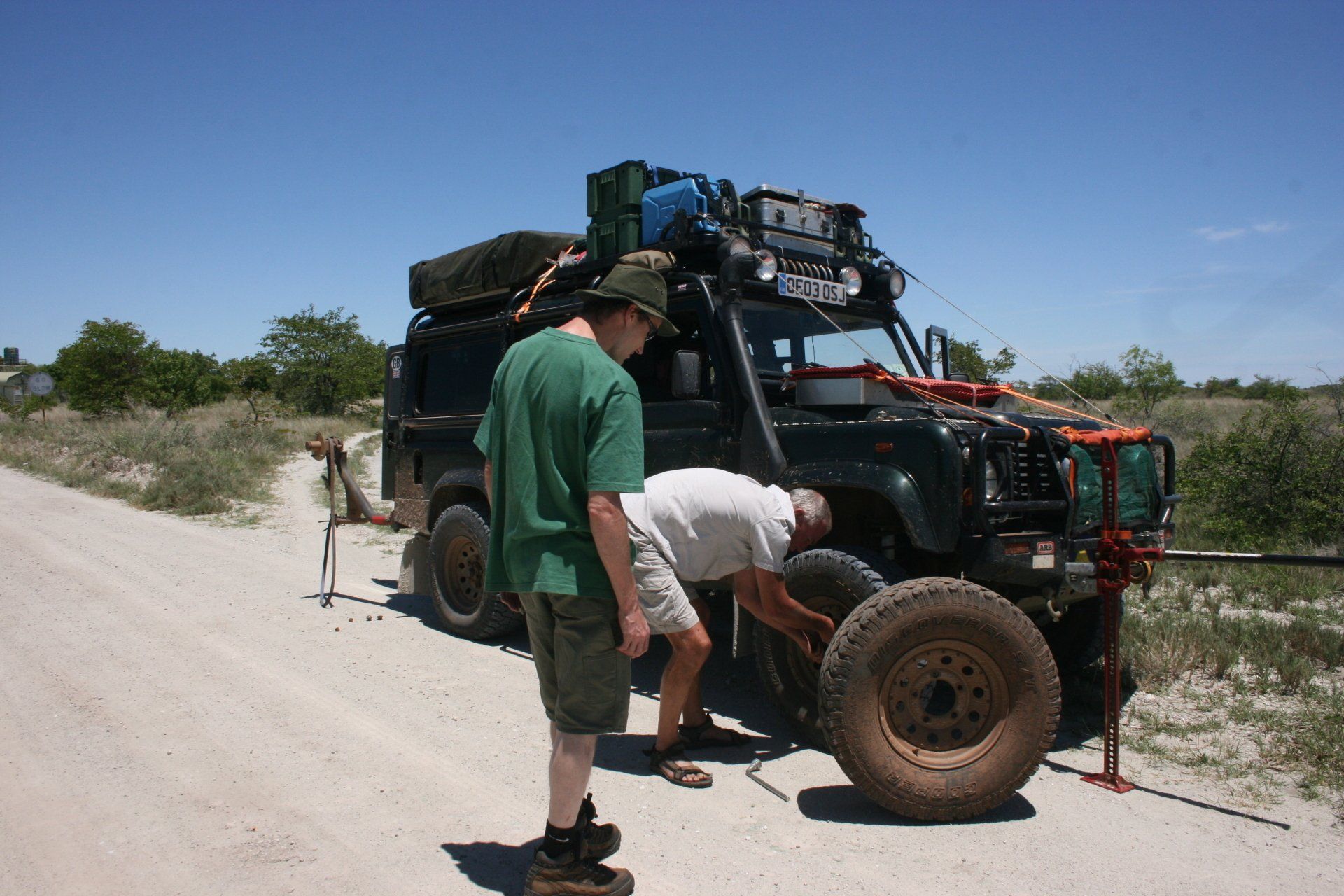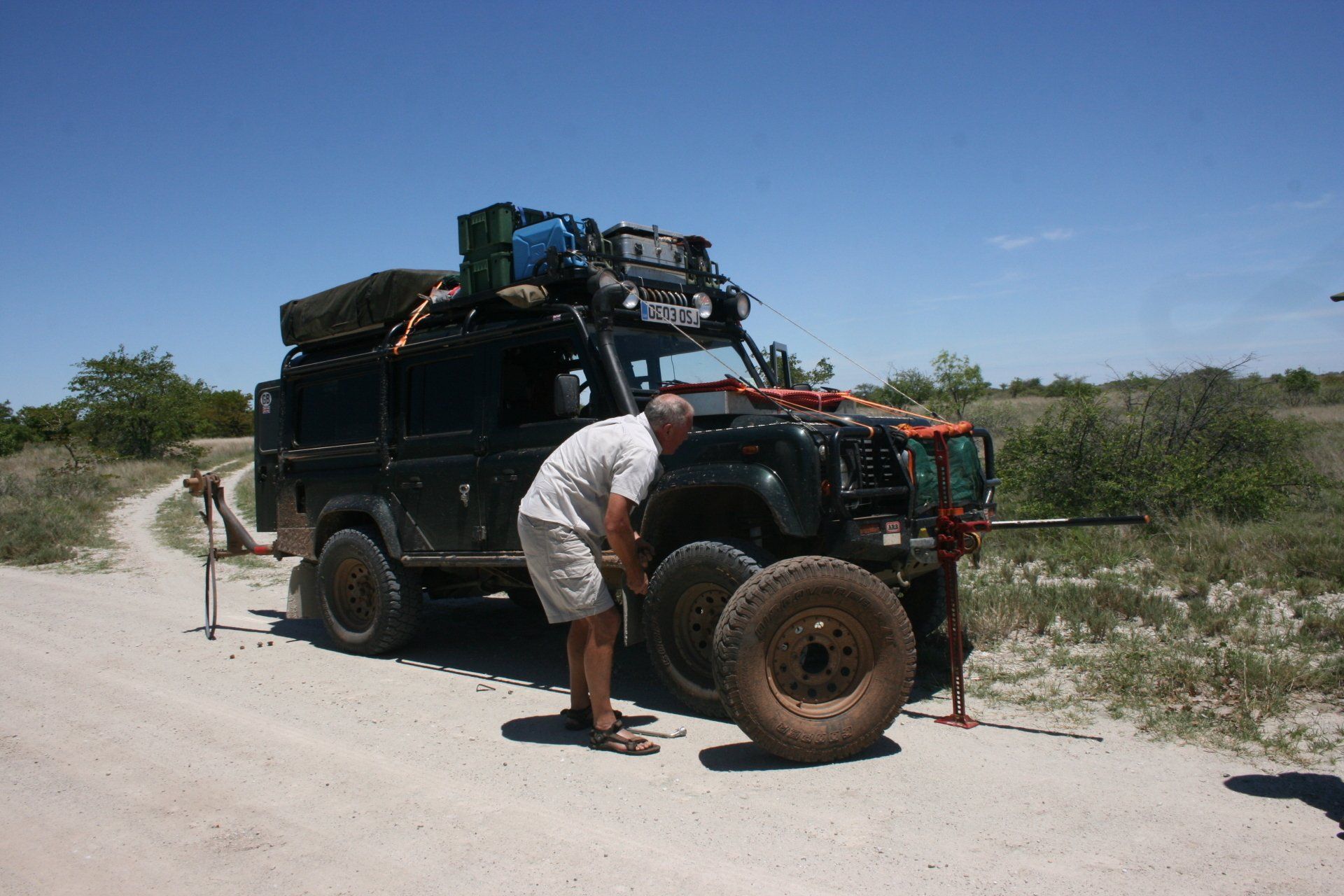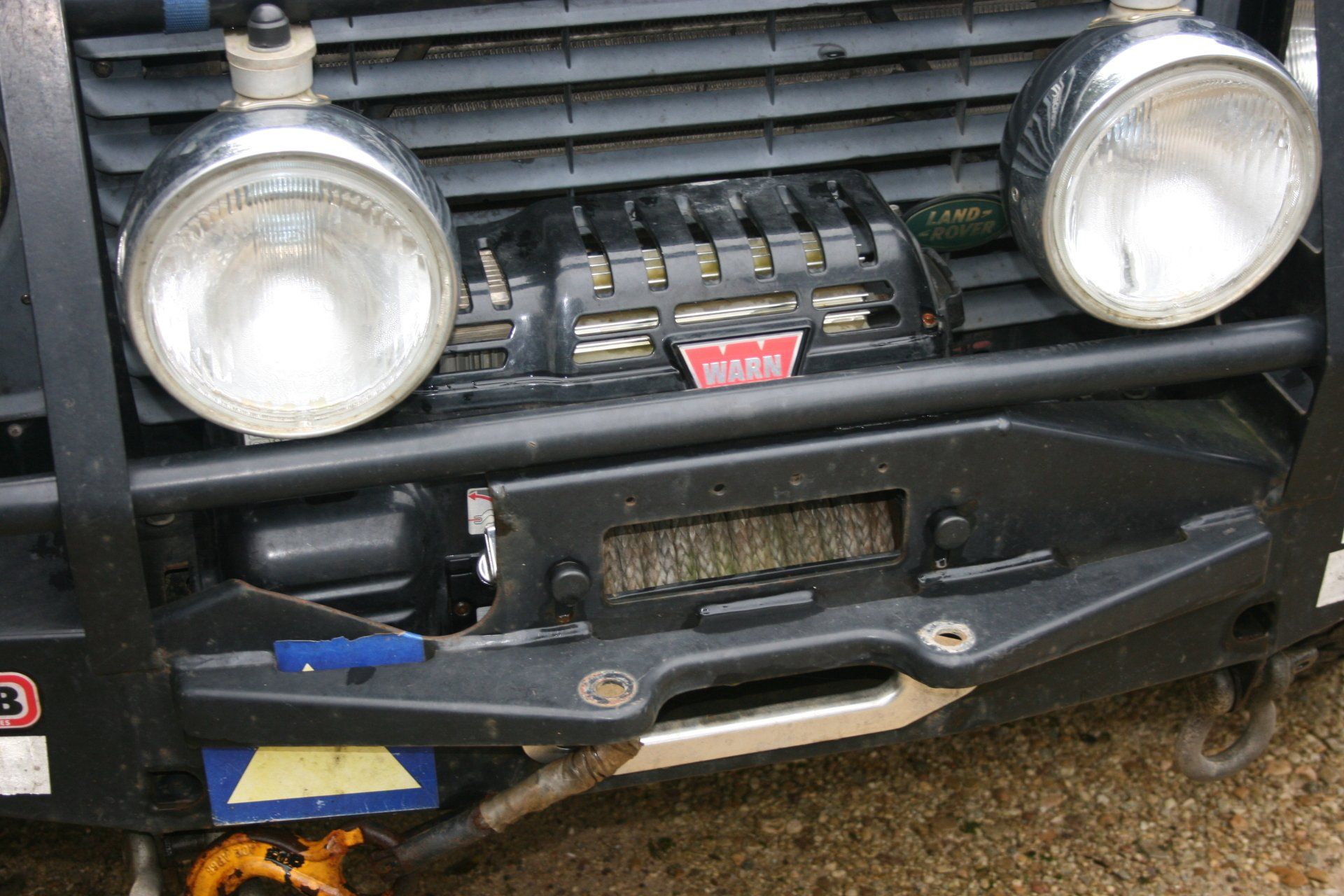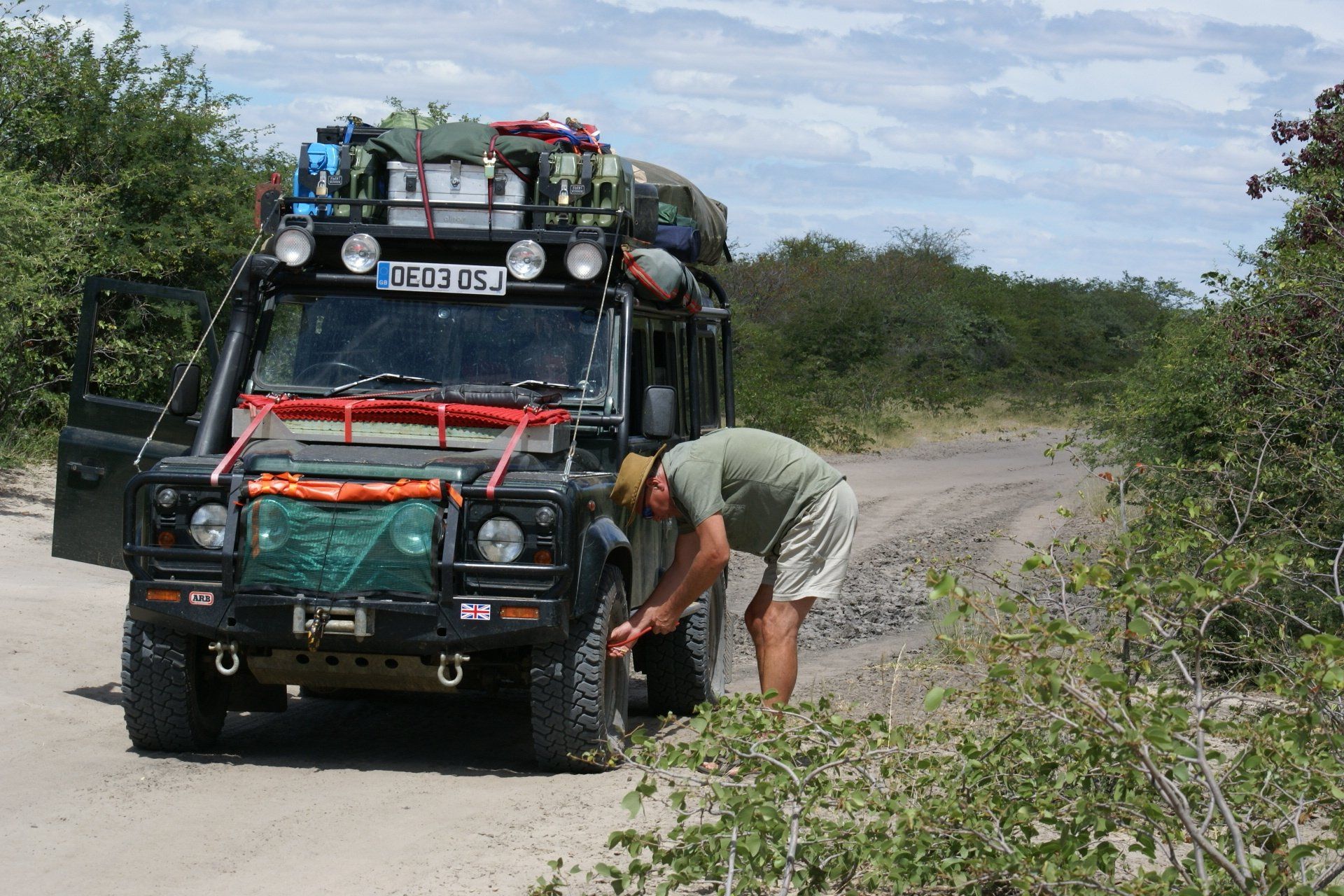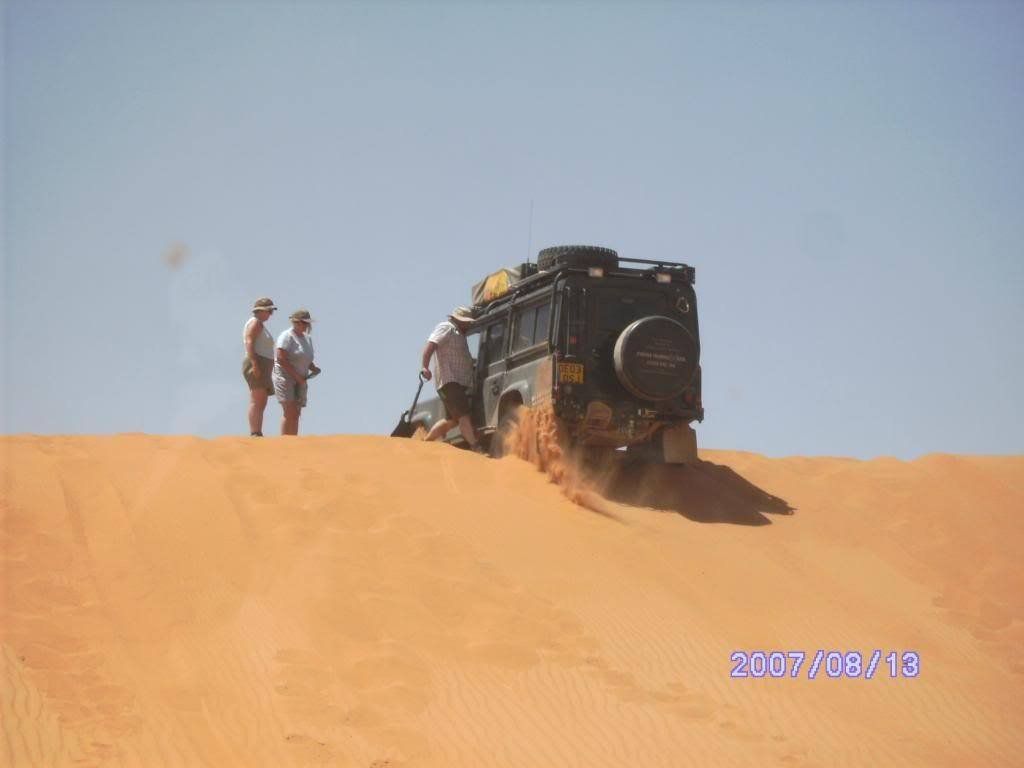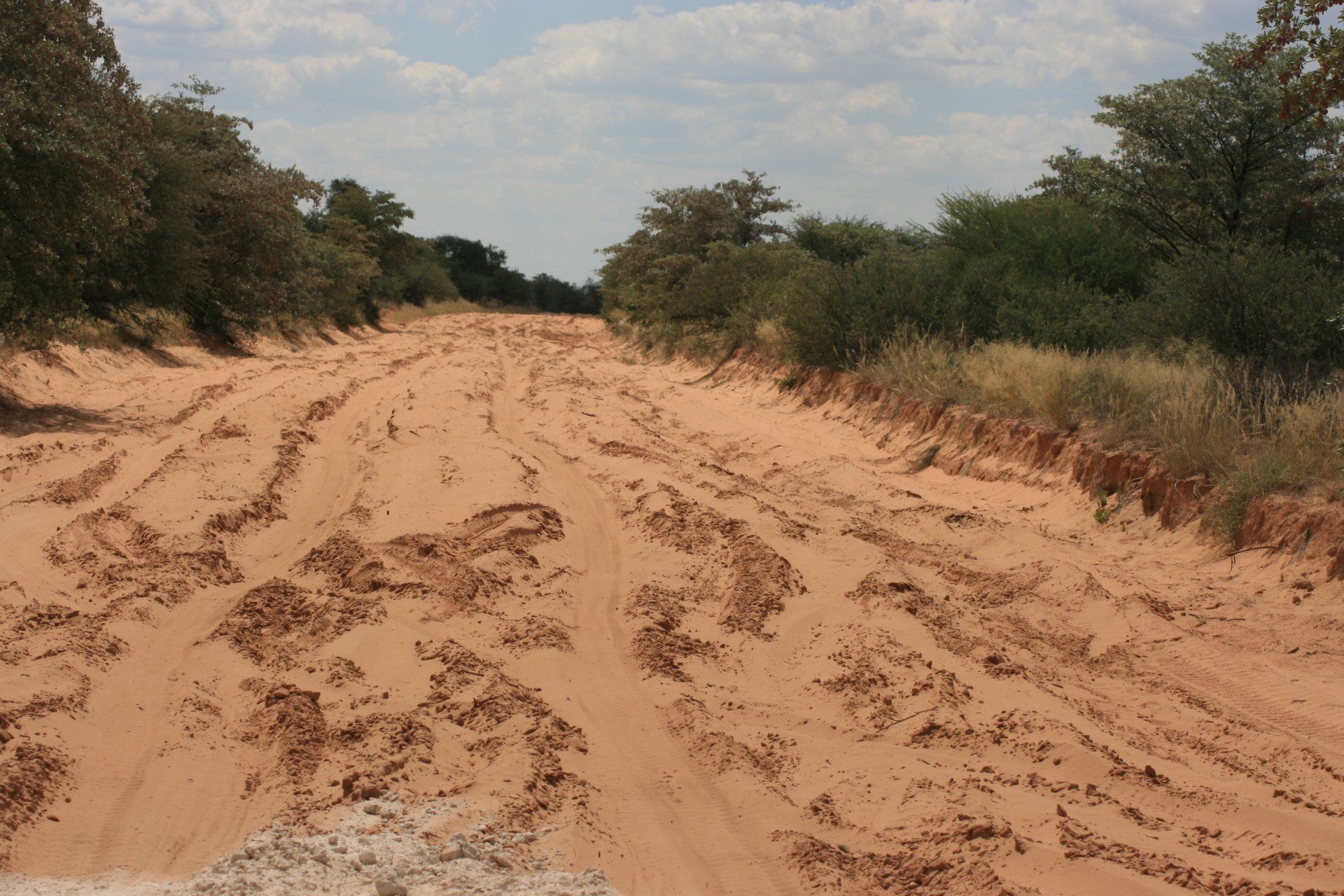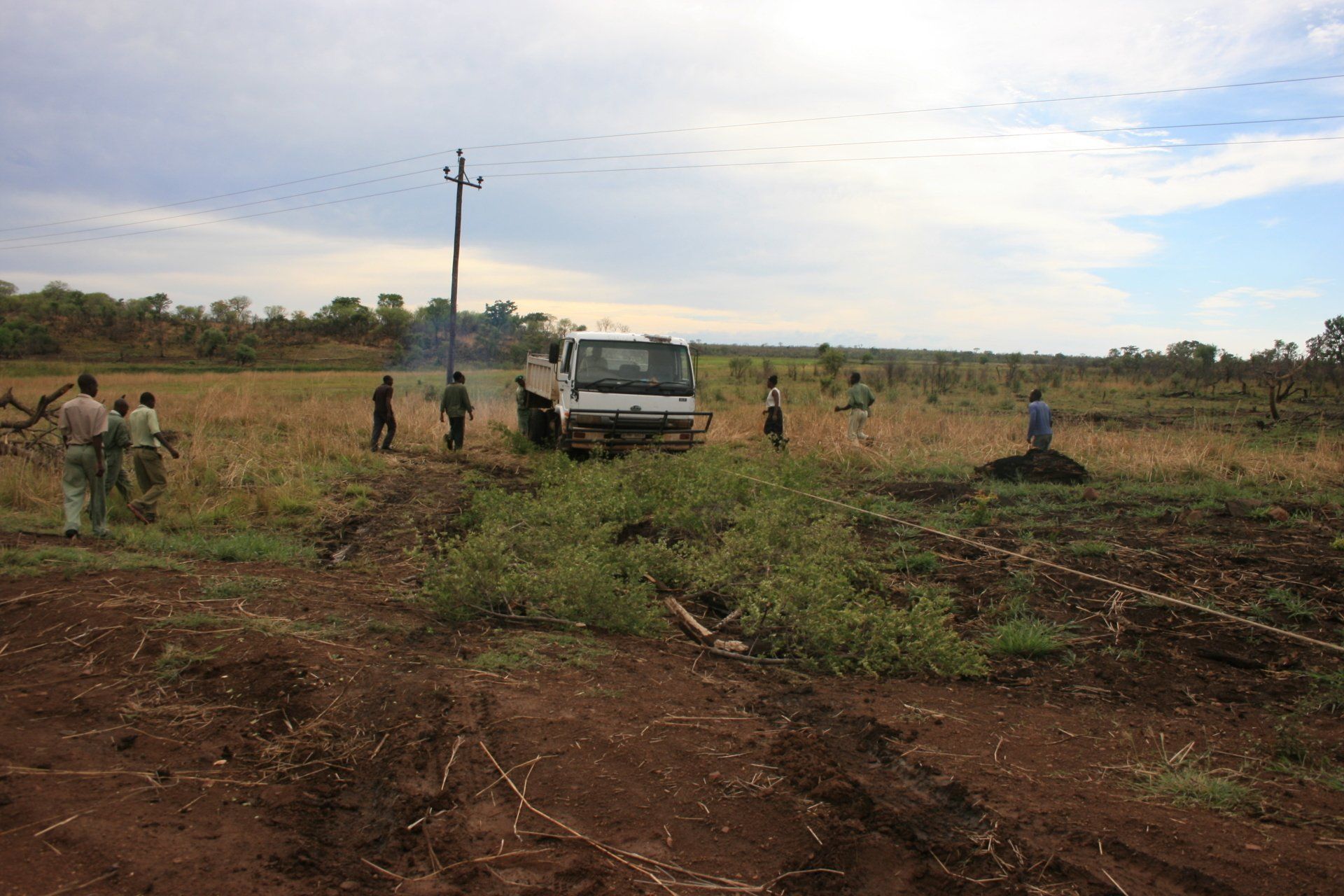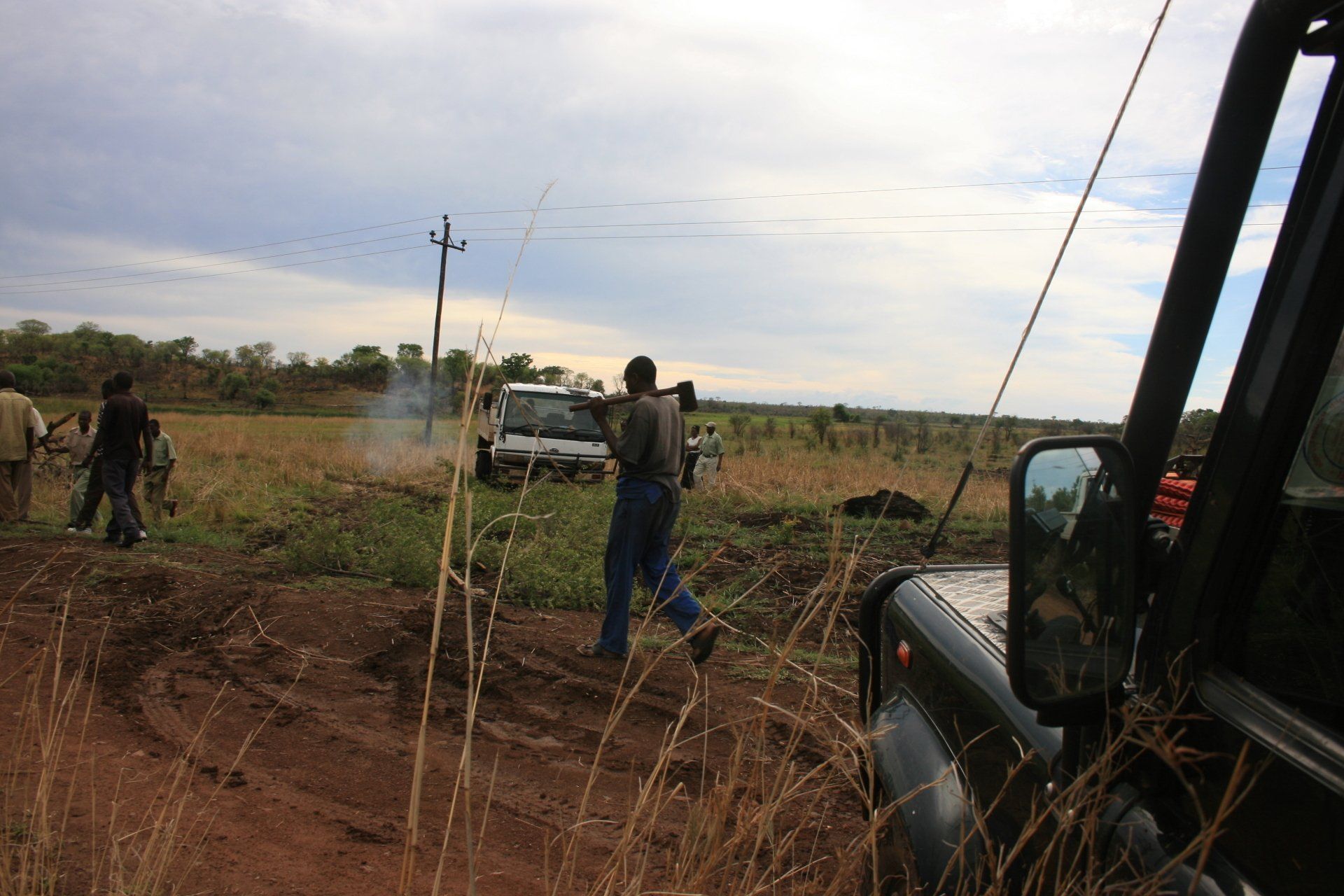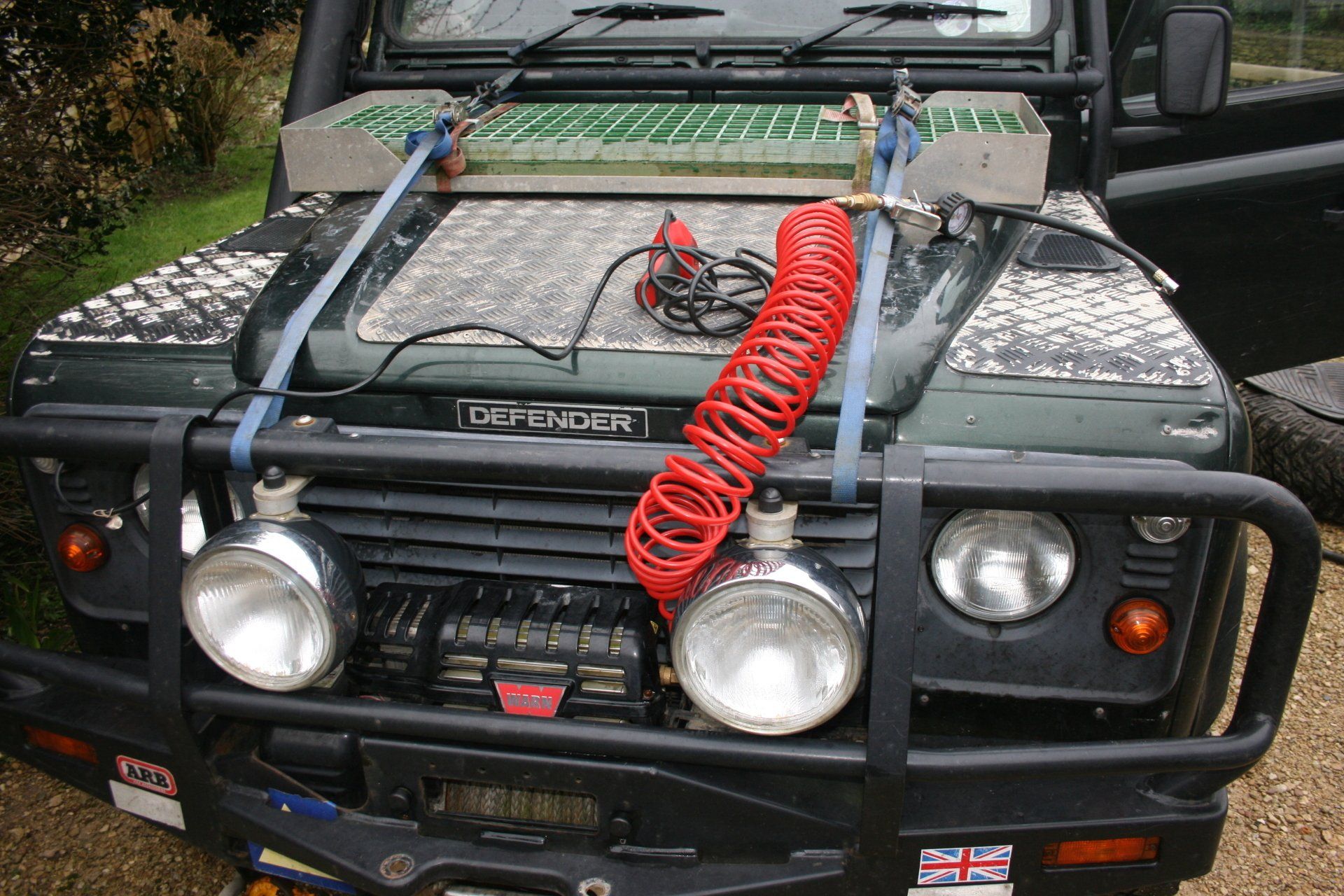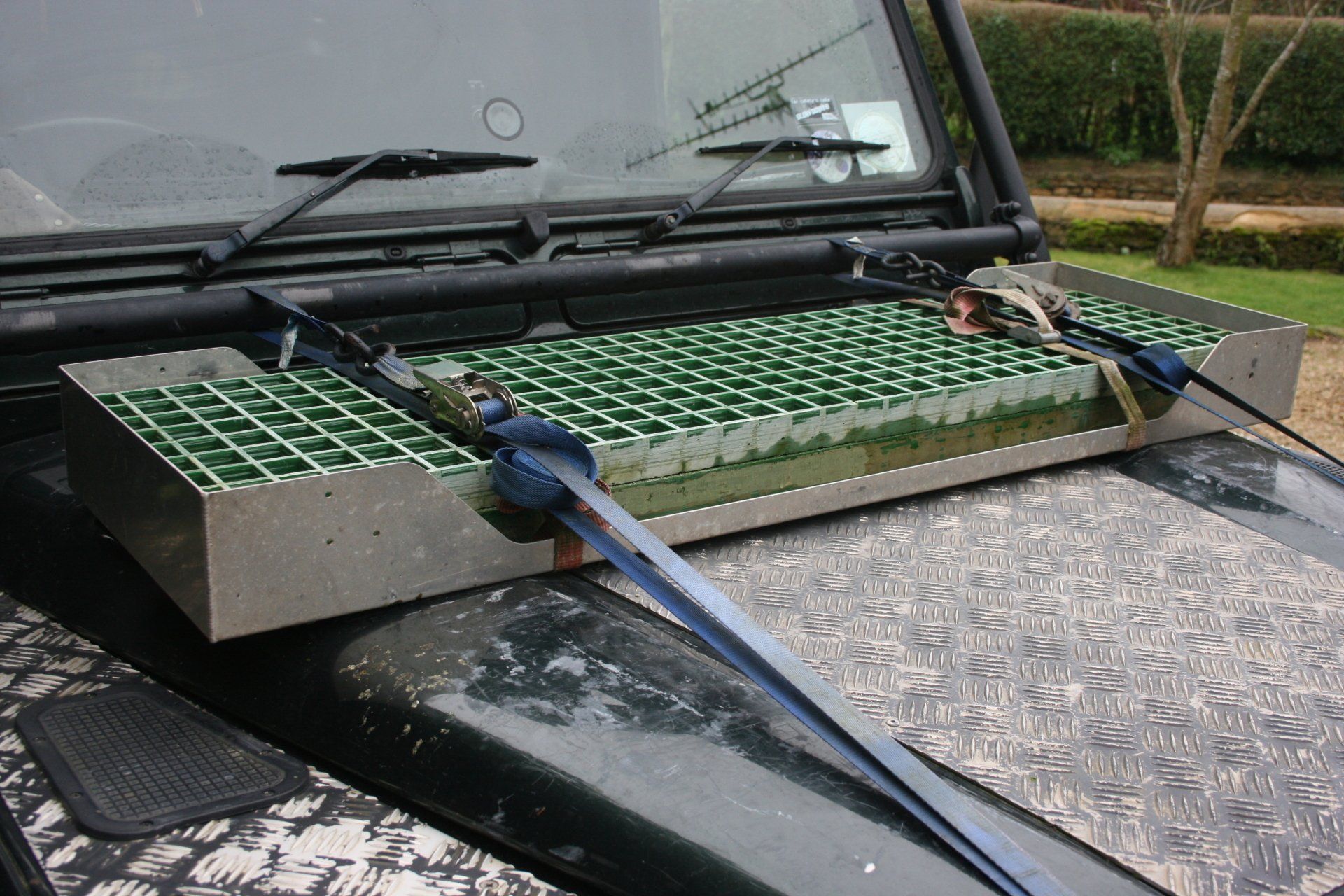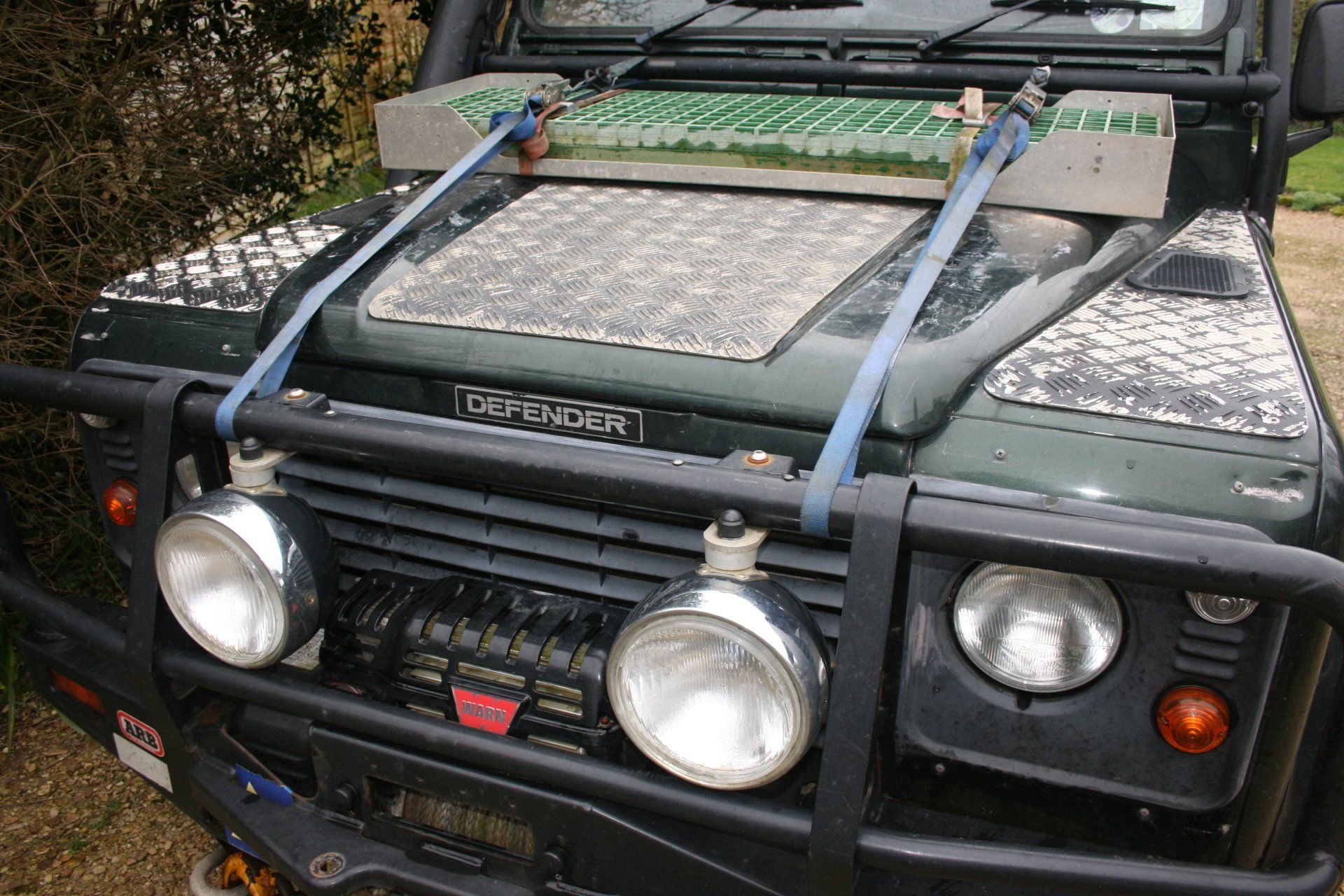Recovery Items
RECOVERY ITEMS
Winch Bumper incorporating ‘bull bars’
A de rigueur item fitted to all safari vehicles! However, in the UK it is now illegal to fit metal ‘bull bars’ as they are not pedestrian friendly. My ARB was fitted prior to this change. Whilst this is a valid point for UK roads, ignoring the fact that the front of a 3 tonne standard Defender isn’t pedestrian friendly either, it is a lifesaving piece of equipment in Africa. The danger of hitting domestic and wild animals is very real; donkeys, cows, goats and sheep wander freely on the roads, often unsupervised and the risk that the larger ones could be launched upwards and through the windscreen is real. This is less likely to happen with a rigid front with a high centre of gravity. The bumper also reduces the likelihood of damaging the radiator and engine components. Likewise, the likelihood of damage caused when pushing through trees, bushes and the like is much reduced. Such a bumper is essential if a winch is to be fitted (the bumpers are still available but without the ‘bull bars’).
Warn Powerplant Dual Force Winch + compressor
We chose this particular item on recommendation and because it incorporated a high capacity compressor.
A very expensive item that will be rarely used but some form of winch for self-recovery is essential if solo travelling in remote areas. A winch needs to be treated with the utmost respect due to the immense forces involved when winching. I would strongly recommend some form of training as we did.
Our winch combined a high capacity compressor for easy tyre reflation; a common occurrence when driving on sand. It takes a lot of air to pump four tyres back up from say 1 bar, 14 psi to well over 2.75 bar, 40 psi so a decent compressor that isn’t going to struggle and over heat is essential.
Despite the huge cost of the winch I was not impressed with it having embarrassingly let me down twice in the UK: once with a defective cut-out mechanism; secondly with a defective solenoid. The first was repaired under warranty but Warn refused to honour the second repair as the item was over, not by much, the 12 month warranty and their explanation for the failure – ‘the winch must have got wet’: not much use when the winch is on the front of the vehicle where getting wet is an obvious occurrence. Not impressed! I had the solenoid removed and a different one fitted under the front wing out of the wet but this really should have been unnecessary considering the winch was well over a £1400 fitted. [replaced on return to UK by another make without compressor – separate compressor also purchased]
With a compressor you’ll need the airlines etc. to blow up the tyres; a tyre deflator is also a useful accessory to drop the tyre pressures rapidly.
The wire hawser was replaced with a synthetic rope which is just as strong but lighter; safer when it snaps and it also floats.
Winches are fine if you have a tree or similar nearby; we also took a ground anchor for use when there was nothing else to attach the winch to. As it turned out, we never used the winch to rescue ourselves, only others but would never travel without one!
Waffle Boards (2) & Sand Mats (4)
Waffle boards are excellent for recovery out of mud & sand being placed under a wheel and also can act as a bridging ladder as they are immensely strong. Sand mats are a light-weight option to metal sand ladders to give additional traction in sand. I had mixed success with the mats the few times I used them; they either worked well or the tyres gripped too well and shot the mat out. I stored them in a waffle board holder attached to the bonnet, not ideal but did save space.
Vehicle Jack
Most expedition vehicles carry a Hi-lift farm jack for jacking up the vehicle. They are very versatile but need to be treated with respect as they can be unstable if jacked high (as I found out back in the UK!). For a Defender an extension is required to fit into the bumper jacking points,
When stuck, the wheels can be lifted to allow waffle boards, sand mats, brushwood or other similar to be placed underneath.
The jack was stored, locked, on a fitting kit on the side of the roof rack (at 120cm difficult to store inside vehicle) which worked quite well but picked up the dust, as found to my cost when I went to use it in earnest stuck in black cotton mud and it wouldn’t lower (a hammer did the trick!). Thereafter I kept the mechanism wrapped in cling film, later replaced by a bespoke cover, both of which suffered from the acacia thorns but did keep out the dust.
Also a good idea to carry a service/repair kit and regularly check the mechanism with each vehicle check – as I found out, it needs to work when you really need it, especially with lions nearby! A base plate is required to prevent the jack sinking in soft ground. Plenty of practice is recommended for using this very important but potentially dangerous piece of equipment. I also took a small bottle jack.
Wheel Strap
A very useful item purchased in Cape Town. Normally when using the hi-lift jack to get a wheel clear the jack firstly lifts the body, then the suspension travel is taken up until finally the wheel clears the road surface – by which time the jack is much extended and more likely to be unstable. With a wheel strap, two hooks fit onto the metal wheel and the other end onto the jack - just the wheel raises rather than the body. Most useful for placing waffle boards and the like under a wheel making the operation quicker and safer – but no good for wheel removal!
Shovel
Another vital item required for a host of functions from digging the vehicle out of the sand to digging the bush toilet. An expedition type shovel with pointed end is best for digging in hard earth. A long handled shovel is useful if a lot of sand digging is expected. Ours was fitted on its mounting bracket on the rear to the off-side, between the gutter and the rear lights (but depends upon wheel carrier design) – padlocked as an easy item to walk off. Also handy to have a small collapsible spade, military type, for general use; also can be used at right angles, handy for shifting a lot of sand or digging trenches etc.
Miscellaneous Recovery Items
Besides the winch an assortment of strops, straps, ropes, kinetic straps, shackles, snatch blocks, tree strops, long tow rope, ground anchor, and more were stored on board – most were buried in boxes but a few items that would be needed in a hurry were left loose for easier access as were the axe; sledgehammer; bow saw; machete; long handled lump hammer (this was used regularly for all manner of tasks and was probably the single most important item carried) to mention a few.
Differential Lockers
In slippery conditions drive power will be directed to the road wheel with the least resistance. To overcome this problem the standard Land Rover Defender has a central differential locking system. This is fine in most conditions but doesn’t lock all wheels; the result being that all drive power will still go to one spinning rear and one spinning front wheel, meaning you are going nowhere. A couple of months before the trip we went for an off-roading day to a local venue; it was wet, very wet and whilst son Gavin’s old Series 111 Land Rover managed to get around the course, we struggled to get out of the car park thanks to our weight and spinning wheels (and the Warn Winch failed us again!).
This clearly was a concern for us as we would be hitting some countries in the wet season and were fully expecting to get stuck in black cotton mud and sand; we needed to be able to extricate ourselves without too much effort or better still, not get stuck in the first place.
This led to the fitting of an ARB rear differential air locker (you can get front ones as well) engaged by switching on a small air pump and then releasing air to engage the locker. This locks the two rear wheels to greatly improve traction. It is difficult to gauge its efficacy because I tended to engage the standard central locking system whenever we were in conditions that might require it where the wheels were able to equalise the rotation on a loose ‘road’ surface and have the air lockers ready to engage for the really sticky sections. We only got stuck twice; once in sand when I wasn’t concentrating, in the wrong gear with no diff locks on; and in black cotton mud where traction was lost because the Land Rover bellied out on a rut.
I did, however, have a major problem with this item – it became inoperable, necessitating repair in South Africa which was very disappointing given the very considerable cost of the system and fitting – not impressed. Would have second thoughts about investing in one if I had my time again.
